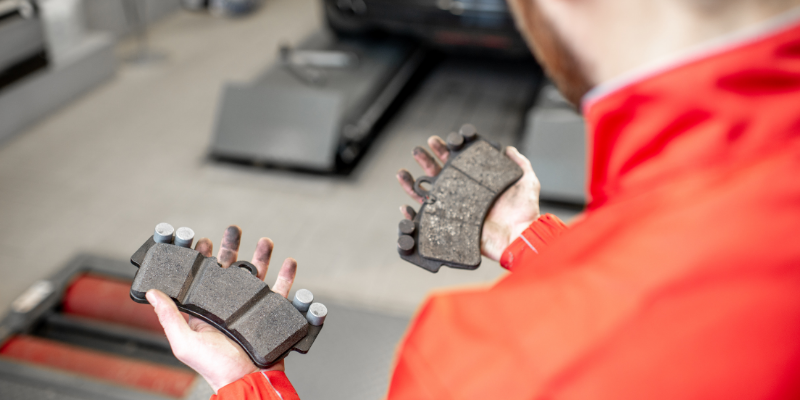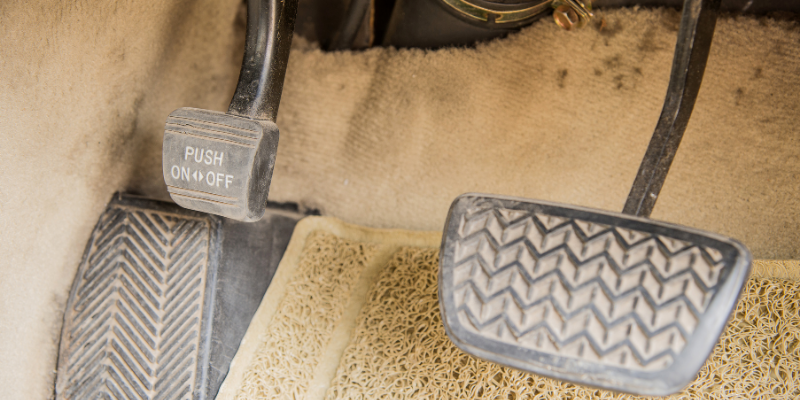From the viewpoint of safety, checking the brake pads is an indispensable part. This is because if you continue to use the product with almost no remaining capacity, the possibility of an accident increases and it becomes a life-threatening problem.
Here we explain the times you need to replace your brake pads.
Symptoms
Soft brake pedal: The brake fluid circuit is the cause; it is necessary to purge the latter. If the problem persists, have the master cylinder and / or rear kit checked.
High-pitched whistles: These are frequent after the abandonment of asbestos in the components of the pad seals. These are now made up of soft metal particles that can possibly generate these noises. There is no particular danger.
Heavy noise under braking: The extreme limit of the brake linings has been reached. The pads need to be replaced urgently.
Jerks when braking: Your brake discs are certainly warped, so they need to be replaced.
Metallic ripping noises: Your brake discs and brake pads are out of order. The danger is imminent: get a professional to intervene quickly.
Handbrake travel is large: Rear brake shoe adjustment problem or large drum and shoe wear (rear brake).
Foamy pedal after heavy use: Discontinued brake fluid or crystallized (smooth) brake pads. Note that the brake fluid must be replaced every 2 years.
Other Indicators
Estimated remaining amount for brake pad replacement is 2 to 4 mm
It is time to replace when the remaining amount reaches 2 to 4 mm. Since the new condition is about 10 mm, it is time to replace it when the remaining amount is less than half.
If it is 2 mm or less, replace it immediately. If it is heavily worn, the base will be exposed and the rotor will be damaged. In addition, the frictional heat causes the brake fluid to boil, which is dangerous because the brakes will not work.
Danger when the remaining amount of brake pads becomes 0
It is very dangerous when the remaining amount reaches 0 mm. Even if you step on the brake when there is no remaining charge, it will not work at all. Driving without remaining capacity can lead to serious accidents that could be fatal to humans.
Brake pads consist of a lining that actually has a braking function and a base that supports it. The remaining amount is the thickness of the lining part. The lining creates friction on the rotor that rotates at high speed to control the rotor.
When the remaining amount is exhausted and only the base is used, the base controls the rotor instead of the lining. The base is not made to brake. Therefore, the rotor cannot be controlled by friction on the base, and the brakes will not work.

Pad Wear indicator informs you of the remaining amount
When the remaining amount is low, it will notify you visually or by sound. This is the “pad wear indicator”. There are two types of pad wear indicators, electric and mechanical, and each has a different medium to appeal to.
In the case of the electric type, an electric wire is attached to the pad, and it is judged that the remaining amount is exhausted when the electric wire is scraped and cut, and a warning light is lit on the instrument panel. It can be said that the system is easy to understand because it can be judged visually.
In the case of the mechanical type, a piece of metal is pre-filled in the pad. It is a mechanism that scrapes up to the part containing the metal piece, and when the metal piece is exposed, it comes into contact with the rotor and makes a “squeaking” sound. When this sound is generated, it is time to replace it.
It is important to note that the metal pieces themselves wear out, making the sound inaudible. Be careful not to think, “I don’t have to change it because the sound is gone.”
Replacement guideline based on mileage
It is also possible to determine the replacement time based on the mileage. It is said that the pad can be scraped by about 1 mm after traveling 10,000 km. Since the remaining amount of new products is about 10 mm, many people may think that they can drive about 70,000 km or 80,000 km. However, heat can wear out more, so it’s actually better to replace it earlier.
In the case of a regular car, it is ideal to replace it at 30,000 to 40,000 km. In the case of a light car, use 40,000 to 50,000 km as a guide.
Check the remaining amount of brake fluid
Brake fluid is the liquid required for the operation of hydraulic brakes. As the brake pads wear down, so does the consumption of brake fluid. In other words, if you check the brake fluid, you can understand the condition of the brake pads to some extent.
You can check the remaining amount of brake fluid by checking the remaining amount of the tank in the engine room in the hood. When the liquid level is approaching MIN or LOWER, it is time to replenish the brake fluid. At the same time, replace the brake pads.
For this method, the previous brake fluid replenishment and brake pad replacement time must match.
When you are changing your brake pads make sure you are choosing the perfect ones. To find the best brake pads for your car is not easy and time consuming tasks. We have listed the top brake pads and you can learn more about them here https://www.gearhuts.com/best-brake-pads-for-toyota-tundra/










